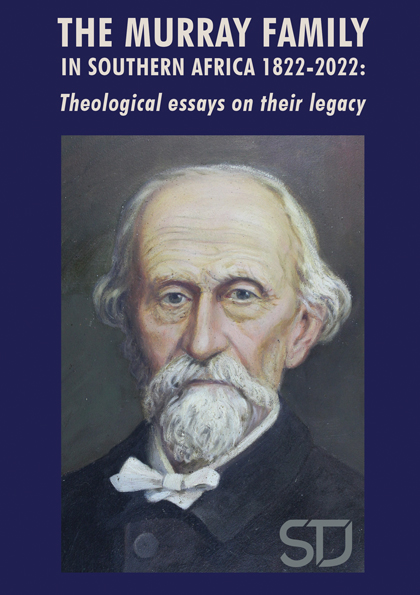Nurturing a missional spirituality
any lessons to learn from the ministry of Andrew Murray Jr (1828-1917)?
DOI:
https://doi.org/10.17570/stj.2022.v8n3.a5Abstract
The Dutch Reformed Church of South Africa [DRC] is currently in a season of reorientation, or perhaps one can say, rediscovering its mission. The aim of this article is twofold: firstly, to reflect on the journey of the DRC over the past two decades to discern its role and function in a "new" South Africa as well as the challenges deriving from this journey.
Secondly, this article wants to contribute to the commemoration of the arrival of Andrew Murray Sr (1794-1866) in South Africa in 1822. The influence of this family on the life and spirituality of the DRC and its mission over the past two centuries is extensive and probably beyond description. When this article therefore dares to explore possible links between the current missional movement in the DRC and the spirituality of Andrew Murray Jr (1828-1917), it is done humbly and hesitantly.
The article will be presented in four sections. The first section briefly describes the discernment process followed by the DRC since 1998. In the second section the major transformational challenges awaiting the DRC in the next decades will be highlighted, and the third section briefly explores what the transformation may entail. Then the article goes back to the time when Andrew Murray Jr ministered in the DRC Wellington (1871-1906). It is well known that under Murray's leadership the Wellington congregation and community played a leading role in the awakening of missionary work by the DRC as well as social development, and the fourth section alludes briefly to some characteristics of Murray's spirituality. The article concludes with a suggestion that the evangelical piety (De Gruchy, 2009:221) of Andrew Murray Jr may be regarded as an early form of missional spirituality.
Published
Issue
Section
License
Copyright (c) 2022 Willie van der Merwe

This work is licensed under a Creative Commons Attribution 4.0 International License.
https://creativecommons.org/licenses/by/4.0/
Authors who publish with this journal agree to the following terms:
Authors retain copyright and grant the journal right of first publication with the work simultaneously licensed under a Creative Commons Attribution License that allows others to share the work with an acknowledgement of the work's authorship and initial publication in this journal.
Authors are able to enter into separate, additional contractual arrangements for the non-exclusive distribution of the journal's published version of the work (e.g., post it to an institutional repository or publish it in a book), with an acknowledgement of its initial publication in this journal.
Authors are permitted and encouraged to post their work online (e.g., in institutional repositories or on their website) prior to and during the submission process, as it can lead to productive exchanges, as well as earlier and greater citation of published work.
Please note that erroneous copyright information is given in the PDFs before Volume 9, 2023.



